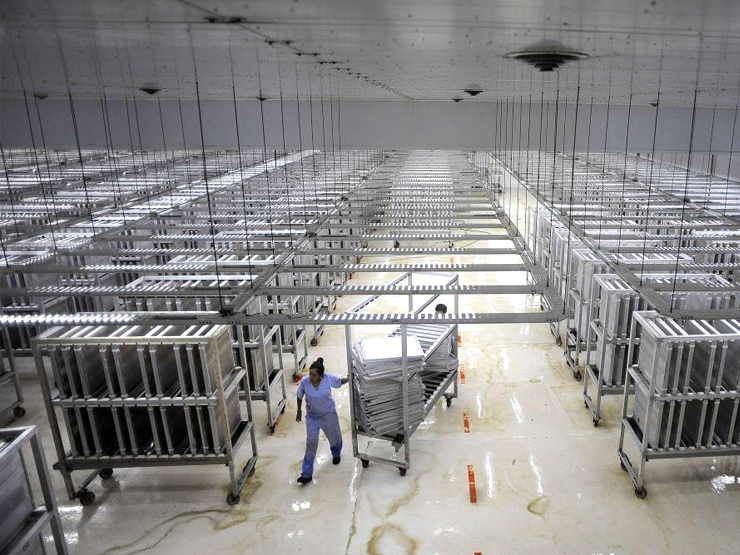
During the 9th edition of the Regional Technical Conference on Blueberries, organized by APAMA, Director of Plant Health from SENASA (National Service for Agrifood Health and Quality), Wilda Ramírez, presented the results of the private public work that the Service is carrying out together with the sector for fruit fly eradication through the Sterile Insect Technique, an innovative and environmentally friendly technique.
In Argentina, fruit growing is one of the most important economic pillars. In 2017, 760,000 tons of fresh fruit were exported which resulted in USD 400 million income. Different types of soil, climate and temperature create, in much of the country, opportunities to develop the sector but also opportunities for the introduction of key pests.
The National Fruit Fly Control and Eradication Program (PROCEM) of Senasa has as its main objective to reduce direct economic damage, due to the decrease in production in the area under the presence of the pest and in quality, as well as indirect damage such as restriction to international and national trade. Within the framework of this National Program, it was proposed to change the strategy that was carried out at an orchard level, where chemical control was performed by the producer and replace it by the integration of control techniques based on biological control through the implementation of the Sterile Insect Technique (SIT). This technique consists in releasing thousands of sterile male insects so that when mating fertile females they produce no offspring which interrupts life cycle of the species and reduces damage. In order to implement this technique, at an initial stage, strong control activity is carried out with chemical products of organic origin that do not cause negative environmental impact and have the same or greater level of effectiveness than traditional products for pest control. After this stage, SIT implementation reduces by 80% the amount of chemical products as compared with the amount currently used in the region, thus benefiting the environment. It is the counterpoint to massive sprayings and more effective because it fights against the fly where access is otherwise impossible, like in the middle of the jungle, yungas or mountains, and in urban plantations. This strategy has already been successfully implemented in the regions of Cuyo and Patagonia.
“We started working in 2012, setting clearer objectives with a technology that allows us to control pest, using tools much more environment- friendly. Ten years ago it was almost impossible to think about SIT, and today this is a reality. I consider blueberry sector a successful case of public and private joint work, since all the effort we made together gave us the possibility to demonstrate that it is a tool that can work very well in the region” said Ramirez. In 2017, SENASA, through PROCEM NEA together with the Association of Blueberry Producers of the Argentine Mesopotamia (APAMA), released male sterile flies for the control of Ceratitis capitata in the province of Entre Ríos in order to encourage and train Program and APAMA technical staff as well as the production sector and citizens of the area in the integral management of biological material, its release to the field and the advantages of SIT. Sterile pupae and part of the necessary inputs for them to emerge and transform into adult insects were provided by the “Santa Rosa” Sterile Insect Production Plant, under the scope of the Institute of Agricultural Health and Quality of Mendoza (ISCAMEN). Program Laboratory staff, in the town of Chajarí, received training on the protocols for conditioning biological material as well as quality tests, to proceed then with their release to production farms, and the analysis of generated data. According to Ramirez “”SIT becomes a very good tool but always within the concept of system approach, where one has different tools and needs to know which one to use at the right time. The challenge now is how to move from an experience of 33 hectares to 150, and adjusting the technique. We see the most important bottleneck in the logistics of moving biological material, which has to be transported from Mendoza to Concordia in months of high temperature (November to January). “
It is important to highlight that the project was carried out in the framework of a Work Plan signed by Senasa and APAMA who also funded the project together with private companies in the sector, including Berries del Sol.
The Sterile Insect Production Plant “Santa Rosa”, under the scope of the Institute of Agricultural Health and Quality of Mendoza (ISCAMEN), is one of the most important production plants of sterile insects in the world. Every single room imitates the natural conditions of the Mediterranean fly so that insects reared in the facilities comply with all their natural biological cycle.






